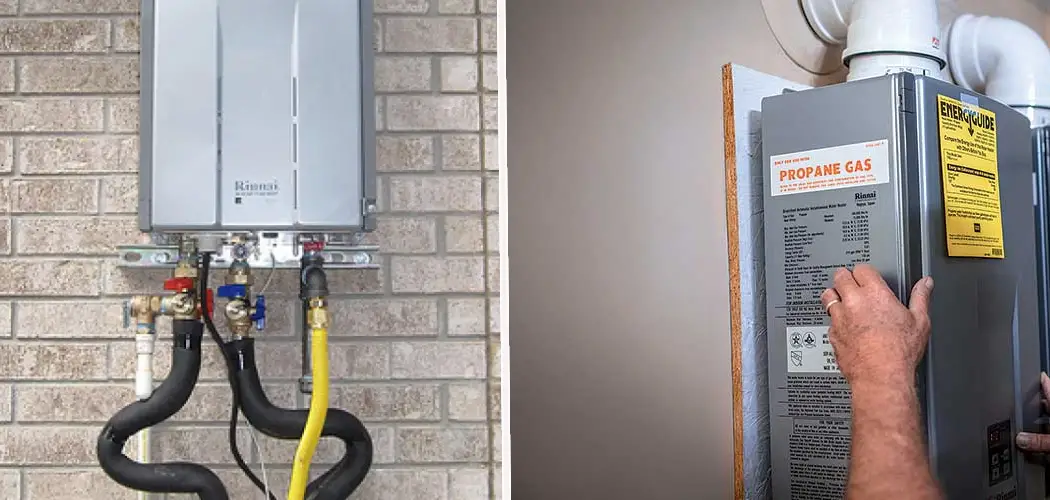If you live in a region where the summer months are mild and the winter months can be terrifyingly frigid, then protecting your outdoor tankless water heater from freezing is of utmost importance. While modern technology has made it easier than ever to install and maintain an outdoor tankless water heater, they are still prone to temperature extremes, both hot and cold in order to ensure that your tankless water heater works reliably year-round.
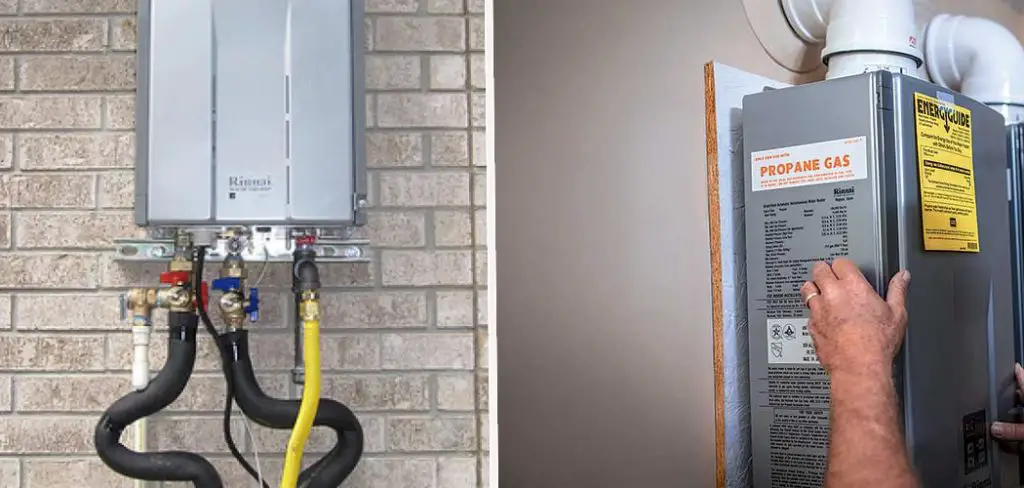
There are a few things you should do during extreme weather events like winter storms. From proper insulation techniques to careful monitoring of temperatures and weather reports, this article will explain how to keep outdoor tankless water heater from freezing so you can continue enjoying hot showers all year long!
Why Do You Need to Keep Outdoor Tankless Water Heater From Freezing?
Tankless water heaters are an excellent choice for those looking to save on energy costs each month. These units work by heating the water as it flows through the unit rather than storing hot water in a tank that needs to be continually heated. This means you don’t need to keep large volumes of water hot at all times, and your energy costs can remain relatively low.
However, the savings in energy costs come at a price: extreme temperatures can damage the components of your tankless water heater. When temperatures dip below freezing, the pipes and connections may freeze and burst, leading to costly repairs or replacements. Therefore, it is important to take proactive measures when dealing with cold weather by taking steps to keep the outdoor tankless water heaters from freezing.
Required Items
Before we begin, here are the items you will need to keep the outdoor tankless water heater from freezing:
- Insulating material (foam insulation boards or foam tape)
- caulk
- weatherproof cover
- thermometer
10 Tips on How to Keep Outdoor Tankless Water Heater From Freezing
1. Install Foam Insulation Boards
Foam insulation boards provide an extra layer of protection when temperatures start to drop. They are relatively easy to install and can be found at most home improvement stores. Insulation boards should be placed on the walls, pipes, and connections leading to and from the outdoor tankless water heater.
2. Secure Conduit Pipe Connections
Pipes leading to and from your tankless water heater should be firmly connected using screws, caulking, or appropriate adhesive. This will help reduce the risk of freezing by ensuring all components are securely attached and not exposed to cold air.
3. Use a Thermometer
In order to determine when temperatures are getting too low, use a reliable thermometer to monitor the temperature of your outdoor tankless water heater. Most thermometers can be easily mounted on the unit itself for easy access.
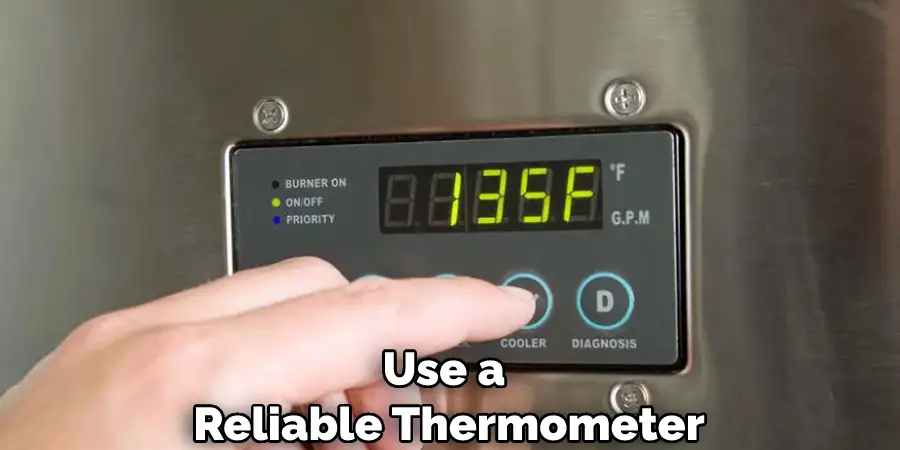
4. Keep the Unit Covered
A weatherproof cover can help keep your tankless water heater protected from cold temperatures by providing an extra layer of insulation. Make sure to use a cover that is specifically designed for outdoor tankless water heaters, as other covers may not be effective.
5. Install Heat Trace Cable/Insulated Flexible Pipe
Heat trace cables and insulated flexible pipes are designed to maintain a constant temperature, even in cold weather. When used with proper insulation techniques, they can help keep your tankless water heater from freezing.
6. Insulate Hoses & Fitting Connections
Hose and fitting connections should be wrapped in foam insulation tape or other appropriate materials to ensure they remain warm during cold weather.
7. Monitor Temperature & Weather Reports
Regularly check the temperature of your tankless water heater and pay attention to any local weather reports that mention extreme temperatures or winter storms. If a cold spell is imminent, it may be worth taking extra precautions to protect your unit from freezing.
8. Insulate Exterior Walls
If you have an exterior wall that your tankless water heater is attached to, consider insulating it with foam insulation boards to help keep the cold air out.
9. Turn Off the Unit When Not in Use
When temperatures are especially low, consider turning off the unit when not in use. This will help conserve energy and reduce the risk of freezing.
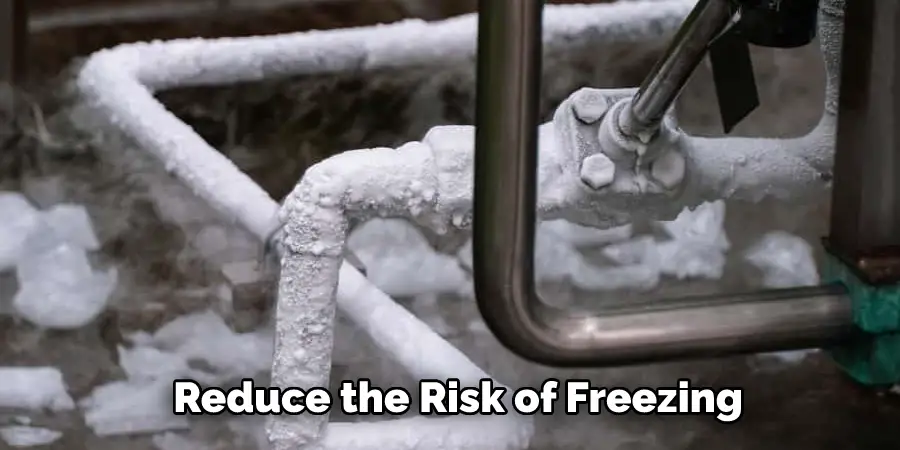
10. Professional Inspect Unit Annually
It is important to have your tankless water heater inspected by a professional at least once per year. A professional technician will be able to diagnose any potential problems and suggest ways to protect your unit from freezing in cold weather.
By sticking to these simple tips, you can keep your outdoor tankless water heater from freezing in cold weather and avoid costly repairs or replacements. Make sure to use the right materials and follow all instructions carefully for optimal protection.
8 Safety Precautions to Follow
1. Install a Heat Trace
Install a heat trace to the tankless water heater and set the thermostat at least 2 degrees higher than the lowest expected temperature. This will help keep it from freezing during colder times of the year.
2. Insulate Pipes and Fittings
Wrap insulation materials such as foam, fiberglass, or silicone around the pipes and fittings lead to and from the tankless water heater. This will help keep the temperature of the water warmer and reduce any chance of freezing.
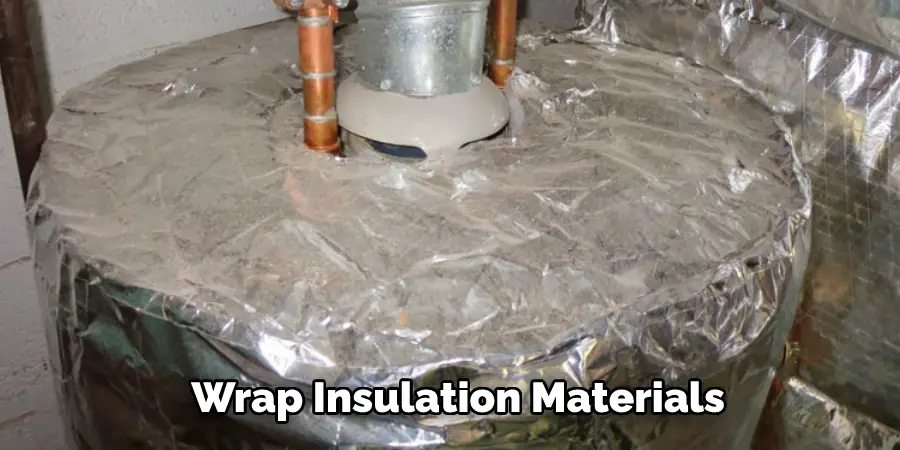
3. Install a Protective Cover
Install a protective cover over the tankless water heater when not in use to protect it from extreme weather conditions. Be sure to check regularly for any signs of damage or wear and tear.
4. Maintain Proper Air Flow
Ensure that the tankless water heater is in a well-ventilated area so that it can get sufficient airflow. This will help keep it from freezing due to a lack of oxygen. Air flow should be directed away from the unit and kept at a minimum to reduce humidity.
5. Regularly Clean the Unit
Regularly clean the tankless water heater to remove any dirt or debris that may be blocking airflow or inhibiting performance. This will help keep it running efficiently and free of freezing temperatures.
6. Check for Leaks
Regularly check the tankless water heater for any signs of leaks or damage. If a leak is noticed, it should be fixed immediately to reduce the chances of freezing temperatures. Leaks are also a good indicator that the unit is not functioning properly and should be serviced as soon as possible.
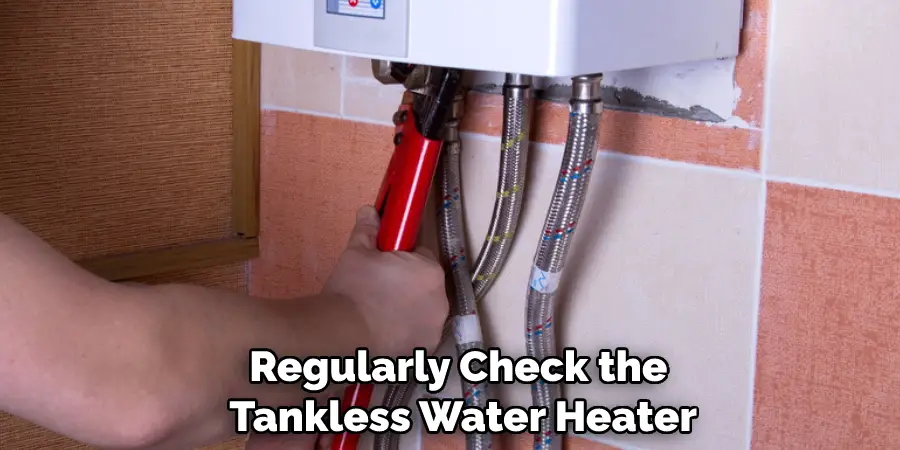
7. Monitor Temperature
Monitor the temperature of both the water heater and its environment to ensure it does not reach freezing temperatures. This should be done regularly, especially during winter months when outdoor temperatures can dip very low.
8. Have a Backup Plan
Have a backup plan in place to ensure that the tankless water heater does not freeze if it is unable to withstand cold temperatures. A generator, for example, can be used to keep the unit running even when electricity fails. This should only be done as a last resort and never in hazardous weather conditions.
Following these precautions will help to keep your tankless water heater from freezing and ensure it performs safely and efficiently all year round. Be sure to check regularly for signs of wear and tear, damage, or leaks, as they can indicate a problem that needs to be addressed quickly. With proper maintenance and care, you can rest assured that your tankless water heater will last for many years to come.
The Best Way to Prevent Tankless Water Heater From Freezing
The best way is Regular Maintenance. Keep your unit clean and well-maintained to ensure it runs efficiently, even in the coldest weather conditions. Monitor the temperature of both the unit and its environment regularly, and take necessary precautions to avoid freezing temperatures. Finally, have a backup plan in place to give yourself peace of mind if something should go wrong.
With regular maintenance and these safety precautions, you can rest assured that your tankless water heater will remain in top condition year-round. By following these steps and taking proper care of your Tankless Water Heater, you can be sure it will keep running all year round efficiently, no matter what the temperature is outside.
Conclusion
Keeping your outdoor tankless water heater from freezing is important in order to maximize the efficiency of your outdoor space. Ultimately, investing in insulation material and creating a wind barrier are great options for achieving success. Additionally, if you live in an area with harsh winters or extreme temperatures, consider installing a winterization kit and investing in a frost protection thermostat to appropriately monitor the temperature.
Ultimately, taking preventative measures and following these steps on how to keep outdoor tankless water heater from freezing to prepare for cold weather can ensure your investment lasts for years to come. With the right preparations, you’ll have hot water any time of year- even during winter! Not sure where to start?
Contact a plumbing professional who can help you navigate through the process so that your outdoor tankless water heater will be kept freezing all year round. Have more questions regarding preventing freezing weather? Feel free to ask us in the comments below – we hope this information proves helpful!

